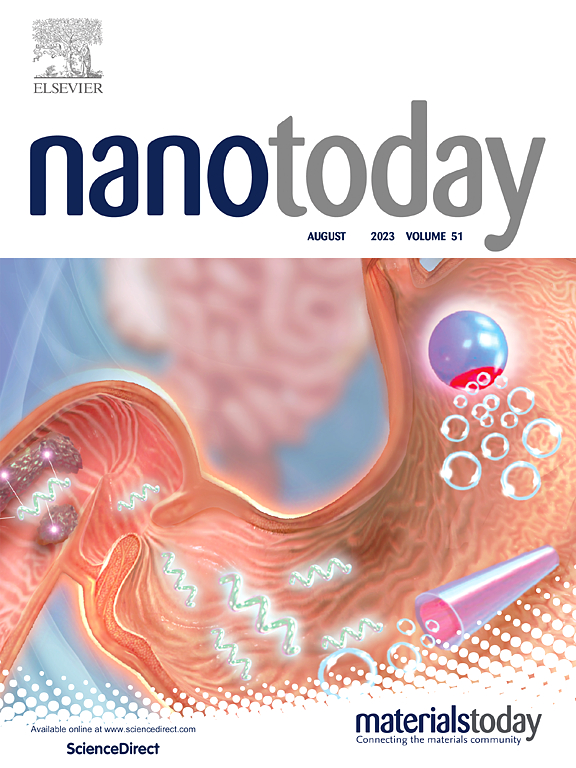Atomic-scale probing of ion migration dynamics in Na3Ni2SbO6 cathode for sodium ion batteries
IF 10.9
1区 材料科学
Q1 CHEMISTRY, MULTIDISCIPLINARY
引用次数: 0
Abstract
Honeycomb-layered phases like Na3Ni2SbO6 have been extensively researched as high-voltage and high-rate capability cathode materials for sodium-ion batteries. However, our understanding of the structural stability and dynamic reaction mechanisms of Na3Ni2SbO6 cathode during cycling, especially at atomic-scale, remains limited. Here, we track the microstructure evolution during extraction of Na+ ions in Na3Ni2SbO6 cathode at atomic scale in an aberration-corrected transmission electron microscope. The electron beam irradiation that can provide a driving force for the Na+ ion migration, allows us to mimic the battery charge process. By controlling the electron beam dose, we study the structure evolution behavior to obtain insights into understanding the work principle and failure mechanism of Na3Ni2SbO6 cathode under different charge rate conditions. We find that the real-time structural evolution and ion migration pathways of Na3Ni2SbO6 cathode are distinct under different electron beam doses. High-dose irradiation reveals Na ion depletion, surface cracks, and phase transformations, mimicking rapid capacity decay. In contrast, low-dose irradiation shows slower ion migration, ordered Na vacancy formation, and maintaining structural integrity, which more closely resembles the electrochemical process of actual battery. This study provides an atomistic understanding of the structural stability and Na ions deintercalation mechanism in Na3Ni2SbO6 cathodes, offering new insights into optimizing electrode materials.
用于钠离子电池的 Na3Ni2SbO6 阴极中离子迁移动力学的原子尺度探测
Na3Ni2SbO6 等蜂窝层相作为钠离子电池的高电压和高倍率阴极材料已被广泛研究。然而,我们对 Na3Ni2SbO6 阴极在循环过程中的结构稳定性和动态反应机制的了解仍然有限,尤其是在原子尺度上。在此,我们使用畸变校正透射电子显微镜在原子尺度上跟踪 Na3Ni2SbO6 阴极中 Na+ 离子萃取过程中的微观结构演变。电子束辐照可为 Na+ 离子迁移提供驱动力,使我们能够模拟电池充电过程。通过控制电子束剂量,我们研究了Na3Ni2SbO6阴极在不同充电速率条件下的结构演化行为,从而深入了解了Na3Ni2SbO6阴极的工作原理和失效机理。我们发现,在不同电子束剂量下,Na3Ni2SbO6阴极的实时结构演化和离子迁移途径各不相同。高剂量辐照显示了 Na 离子耗竭、表面裂纹和相变,模拟了容量的快速衰减。相比之下,低剂量辐照显示出离子迁移速度较慢、有序的 Na 空位形成以及结构完整性的保持,这与实际电池的电化学过程更为接近。这项研究提供了对 Na3Ni2SbO6 阴极结构稳定性和 Na 离子脱闰机制的原子论理解,为优化电极材料提供了新的见解。
本文章由计算机程序翻译,如有差异,请以英文原文为准。
求助全文
约1分钟内获得全文
求助全文
来源期刊

Nano Today
工程技术-材料科学:综合
CiteScore
21.50
自引率
3.40%
发文量
305
审稿时长
40 days
期刊介绍:
Nano Today is a journal dedicated to publishing influential and innovative work in the field of nanoscience and technology. It covers a wide range of subject areas including biomaterials, materials chemistry, materials science, chemistry, bioengineering, biochemistry, genetics and molecular biology, engineering, and nanotechnology. The journal considers articles that inform readers about the latest research, breakthroughs, and topical issues in these fields. It provides comprehensive coverage through a mixture of peer-reviewed articles, research news, and information on key developments. Nano Today is abstracted and indexed in Science Citation Index, Ei Compendex, Embase, Scopus, and INSPEC.
 求助内容:
求助内容: 应助结果提醒方式:
应助结果提醒方式:


